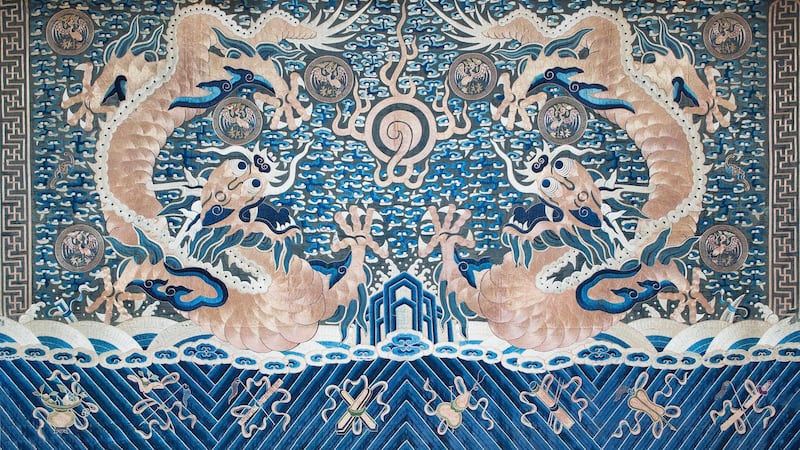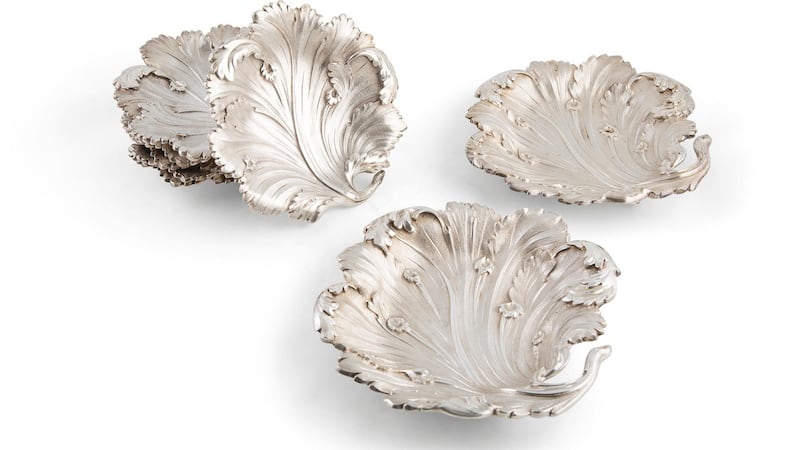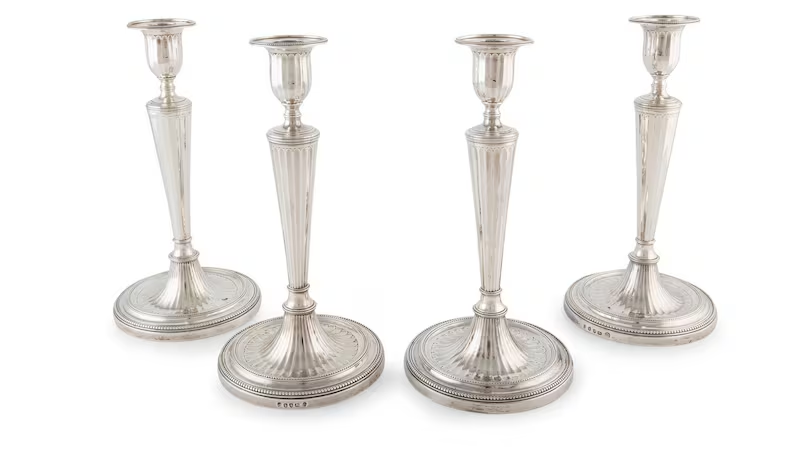It’s a story straight out of the American Dream. His Presbyterian great-grandfather may have left Co Monaghan in 1764 with little more than the four shillings and eight pence it cost to sail across the Atlantic; but by 1919 the newspaper magnate William Randolph Hearst was so wealthy he was able to build a fabulous castle on a hill high above the Pacific Ocean, overlooking the village of San Simeon.
Hearst was an avid art collector and Hearst Castle was – and, now as a museum run by the state of California, still is – crammed with artworks. When financial disaster threatened Hearst’s publishing empire in the mid-1930s, however, he sold off some of his possessions in a series of characteristically oversized auctions.
Among the objects he put on the market were paintings by Anthony van Dyck, George Washington’s waistcoat, Charles Dickens’s sideboard, Thomas Jefferson’s bible – and, at a sale conducted by Parke-Bernet auctioneers in New York on January 7th, 1939, an Irish marble-topped serpentine side table. This elaborately-carved piece is now up for sale once again, at Adam’s At Home auction next weekend (Lot 417, €8,000-€10,000).
“I have a photograph of the catalogue page from that 1939 sale, and the table is described there,” says James O’Halloran of Adam’s. No previous provenance is given, so it’s not known where Hearst got the table; the current vendor bought it in Ireland a number of decades ago.
Its regal lion masks, rope-twist frieze and acanthus leaves would have fitted right in with the spectacular decor at Hearst Castle. And who knows? Perhaps the media mogul, whose already larger-than-life story was sprinkled with big-screen fairy dust and immortalised in the movie Citizen Kane, used it for one of his nightly proof-reading sessions.
American social history
If the table represents a slice of American social history, another object in the Adam’s sale comes from the recent history of China. Lot 259, a large silk wall hanging, was owned by General Sir Edmund Barrow, a British army officer who was sent to China as chief of staff in response to the Boxer Rebellion in 1900.

The Boxers were a resistance movement who opposed Western colonialism and Christianity; so why Sir Edmund ended up with a tapestry suffused with the imagery of the opposition is anybody’s guess.
But he had a good eye for interiors. Made using the Kesi silk technique, renowned for its clarity and lightness of pattern, the piece shows a pair of golden five-claw dragons chasing the pearl of wisdom. The background pulsates with cloud scrolls, and eight roundels filled with cranes and other symbols of good fortune, while the lower border is woven with the eight emblems of the Daoist Immortals. “It’s a lovely thing, and it’s in great condition,” says James O’Halloran. “This is something that hasn’t been out and about.” The Kesi wall hanging carries a guide price of €6,000-€10,000.
The sale also features silver from the collection of the Daly family – one of whom, Colonel Denis Daly, left Dunsandle House in Co Galway in 1931 after a family row, and bought a new home for himself and his wife. That modest little mansion was Russborough House in Co Wicklow, and while the couple would have taken much of the family silver with them, some smaller pieces from other parts of the family are coming under the hammer next week.

They include a set of exquisite George IV dessert dishes (Lot 27, €6,000-€10,000) in the shape of vine leaves, supported on mollusc feet and a rare double-lidded table snuff casket made in Dublin in 1750 and engraved with the sign of the hand dexter, alluding to the Dalys’ kinship to the O’Neills of Ulster (Lot 28, €2,000-€3,000). A set of four elegant candlesticks have fluted stems, beaded drip pans and beaded, fluted bases (Lot 30, €6,000-€8,000).
Historical inscriptions
Several pieces carry interesting historical inscriptions: a large two-handled tray (Lot 26, €1,600-€2,200) was presented to Captain DW Daly by the officers of the Eighth King’s Royal Irish Hussars in 1932, while one of a pair of Victorian salvers is inscribed “presented to W Daly Esq, on his marriage, by Lord Clanmorris 16th of August 1893” (Lot 10, €400-€600). The most expensive item in the sale is the 300-piece Dunsandle cutlery service (Lot 33, €8,000-€12,000) while a silver snuff box, also engraved with the family crest, (Lot 23) is priced at €500-€800.

Among the furniture offered at this sale is a framed mahogany square settee (Lot 412, €4,000-€5,000) upholstered in mint green and raised on turned, fluted legs and brass castors and a set of 12 dining chairs (Lot 406, €3,000-€5,000) with leather-covered seats. Leather also features in an unusual three-seat saddle bench with trestle-end supports (Lot 567, €1,000-€1,500) and a fine Carlton House writing desk on square tapering legs (Lot 423, €2,500-€3,500).
At the more modest end of the pricing scale are a Bohemian glass tray sporting a female nude reclining by a bush (Lot 476, €100-€200), a ruby glass spirit flask (Lot 528, €100-€150), two Bohemian glass trinket boxes (Lot 477, €100-€200) – and, for those with a sweet tooth, a collection of pewter chocolate moulds in the shape of hearts, leaves, shells, stars, fish and even a ladybird. Lot 586 carries an estimate of €100-€200.
Adam’s, 26 St Stephen’s Green, Dublin 2. At Home auction, June 17th, 11am. For online catalogue, viewing times and bidding details see adams.ie











